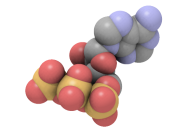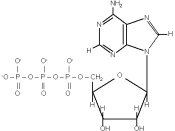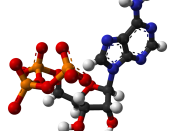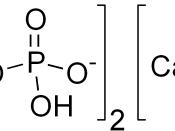Superphoshate is a fertilizer produced by the action of reacting concentrated sulfuric acid on ground phosphate rock. Calcium sulfate is a considerable waste produce of this process.
Ca3 (PO4)2 + 2H2SO4 â Ca (H2PO4)2 + 2CaSO4Superphosphate used world wide by as a fertilizer the farming industry and gardeners. It increases plant production by as much as 106% as long as the plants are getting the required amount of water for normal plant growth. Super phosphate does little if nothing if there is no rain or agitation so farms living in low rain fall areas tend to use other non water depended fertilizer. It was really bought to the market in the second haft of the 20th century when an economical way of spreading it came about. The Development of aerial topdressing in New Zealand started the market off it was liked as the fertilizer could be spread economically over large areas.
Now in Australia Superphoshate is put in with the seed when sowing or spread with ÃÂSuperphoshate trucksÃÂ as we are not as hilly as New Zealand.
It works by gradually decomposing in the soil, providing soluble phosphorus which is absorbed by roots and Tran located within the plant. Its benefits are it also contains Sulphur in the readily available form of sulphate for plants to take up. This makes it ideal for low fertility and cropping situations. The Calcium in Superphosphate can be important in some horticultural and hill country situations where it is uneconomic to use lime.
Phosphate is found naturally in bird poo or by the action of guano as a result there are large deposits found around sea bird colonies which can be and are mined. Nauru an island in the South Pacific is famous for it mining sties much of the soil was mined and much of the environment was destroyed.
One of the side affect of using superphosphate is that earth worms can not live in the superphosphate soil. As a result super soils will not have the structure and nutrients which worm provide. Large scale superphosphate use harm some species such as the Giant Gippsland earthworm which has been listed as threatened.
It has no effect on plants if there is no rain due to the way it releases energy that problem has been over come by applying it dissolved in water but it is more expensive. If surface run off occurs on highly fertilized farming area algal blooms can occur resulting in lack of oxygen in the water and marine animals and plants can be killed or harmed. If the run-off fertilizer can also kill coral reefs as it makes the mud sticky and the coral can not cope.
High analysis phosphate fertilizers.
High analysis means that they have higher phosphate content in them (20 percent more) they are called double or triple phosphate. Using phosphoric acid in place or in part replacement of sulfuric acid make the phosphate content higher therefore making a stronger fertilizer.
This gives the fertilizer more bang for its buck it means that you only have to buy one bag of triple strength for the same affect of three bags of single strength. ItÃÂs easier to transport but high concentrated amounts of phosphate can do more harm than good damaging the plant and slowing or stopping growth. Single strength is under a lot of pressure from higher analysis phosphate and as a result demands have flattened and even declining. I only contain 9% phosphate as to 25% in triple strength let it seems that it will stay dominate in pasture application in Australia.
PhosphatesPhosphates are an important plant nutrient it is what makes Superphosphate work as it may govern the rate of growth of organisms.It is also used in deflocculates detergents, metal treatment and animal feeds. By far the largest application is in fertilizers and every year around 140M TPA of phosphate rock is produced world wide.
Chemistry specking its empirical formula PO43â and has a molar mass of 94.973 g/mol. itÃÂs structure consists of one central phosphorus atom surrounded by four identical oxygen atoms in a tetrahedral arrangement as shown.
It is usually found in the form of adenosine phosphate which contains Adenosine diphosphate (ADP) and Adenosine triphosphate (ATP) which stores and moves energy. This is what makes Phosphate such a great fertilizer energy chemically stored and it can move to cells faster. Therefore plants grow bigger, better, and faster. Originally ground phosphate was just used for a fertilizer and still is in organic framing. But now after we figured out how to chemically treat it to make Superphoshate which is much more commonly used.
Adenosine triphosphateATPs consist of adenosine which in its self has an adenine ring and a ribose sugar and three phosphates groups (triphosphate). It is water soluble but when but is hydrolyzed when exposed to high pH. When dissolved in water it is rich in chemical energy. Energy is released when the second bond is broken and water is allowed to react with the two products. This is why Superphosphate is only useful if there water available. ATPS are also the reason phosphate is in animal feed, pure ATP and be used as a steroid and used for muscle growth in cattle.
Biologyhttp://www.yates.com.auhttp://en.wikipedia.org/wiki/Superphosphatehttp://www.chemlink.com.au/phosphat.htmhttp://en.wikipedia.org/wiki/Adenosine_triphosphate]Mackions magazine





